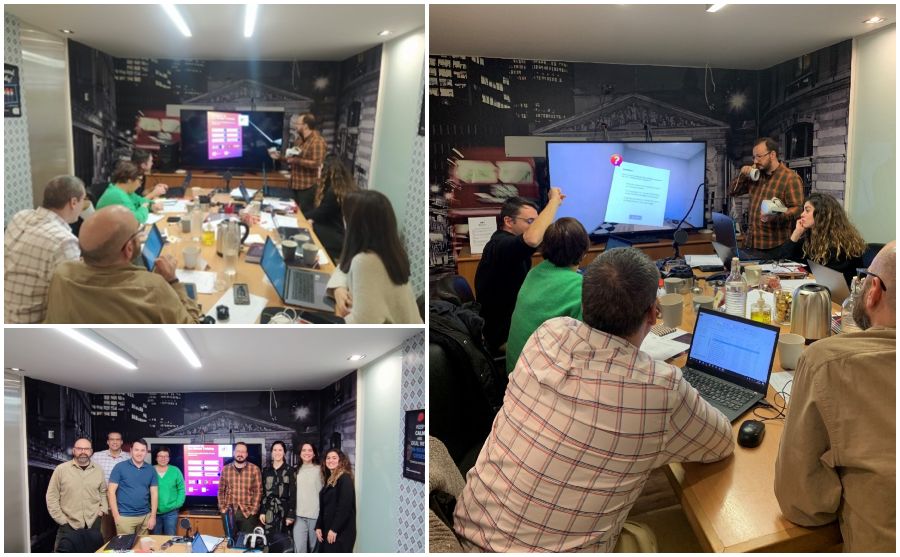Virtual reality scenarios to engage incarcerated individuals in competence development programmes are being piloted in innovative European initiative.
Participating in education and training activities while incarcerated can have a multitude of benefits for individuals. These individuals, often lacking in basic competencies and vocational skills1, can gain confidence and improve their chances of employment upon release.
However, training opportunities are often limited in prisons due to the lack of technical tools and resources required for vocational courses. Even when such courses are available, participation rates can be low and dropout rates high.
Virtual Reality Shows Promise in Prison Education
Virtual Reality (VR) technology has been widely used in public education due to its potential to support learning and bridge the gap between theoretical and practical approaches2. Now, new VR technology is revolutionizing the way incarcerated individuals are trained and prepared for reintegration into society. By using VR, they can practice real-life scenarios in a safe and controlled environment, which helps them adjust to life outside of prison.
This technology offers numerous benefits for training, including realistic scenarios, remote accessibility, and adaptability to different learning styles. Moreover, VR offers an enjoyable and innovative experience that can lead to greater engagement and better comprehension 3. Research suggests that the use of VR in inmate education can enhance information retention, and induce a sense of emotion, which can motivate inmates to participate actively in educational programs4.
The ViRTI Project
The ViRTI project is committed to improving training and skills development of incarcerated individuals by using VR technology. The initiative’s objectives are to motivate this specific population to engage in training, provide them access to training environments that are usually not accessible in prisons, and enable them to develop basic and transversal skills through the interactions permitted by this technology.

On February 7th and 8th, 2023, the ViRTI partners gathered in Piraeus, Greece, for the 3rd Transnational Project Meeting, hosted by the partner SQLearn. The partnership came together to collaborate on next steps and make decisions regarding the project progress. The event also meant the perfect opportunity to review and analyse initial feedback on the pre-pilots of the solution that the project has developed, and to Identify challenges and opportunities ahead of the project.
In the recent pre-pilots, participants provided positive feedback on the programme. According to partners from Spain and France, participants shared that while there were some details that needed improvement, overall, the pilot participants rated the experience very positively.
With the necessary improvements already being made, the partners highlighted the success of the programme and noted that it had the potential for further growth and development.
What’s Next for ViRTI?
ViRTI is set to take the next step in accomplishing its mission and objectives. During the months of March and April, 2023, all partners will conduct pilots in their countries (Portugal, France and Spain), providing inmates with an opportunity to engage in VR training and evaluate its effectiveness in enhancing their skills and motivation.
Additionally, the ViRTI Consortium will organise in May 2023 dissemination events in each partner country, engaging with stakeholders and the wider community to share the results of the initiative and promote the use of virtual reality in incarcerated individuals’ training.
Finally, in May 2023, ViRTI will hold its Final Conference in Portugal (Covilhã), bringing together experts and stakeholders from across Europe to discuss project results and the initiative’s potential for improving the rehabilitation of incarcerated individuals.
The ViRTI project represents a step forward in the use of technology to enhance the rehabilitation of inmates and prepare them for successful reentry into society. With its innovative approach, ViRTI continues to push the boundaries of technology and education to improve the lives of inmates and promote a more just and equitable society.
1 Davis, L., M., Steele, J. L., Bozick, R., Williams, M. V., Turner, S., Miles, J. N. V., Saunders, J., & Steinberg, P. S. (2014). How Effective Is Correctional Education, and Where Do We Go from Here? The Results of a Comprehensive Evaluation. Santa Monica, CA: RAND Corporation. doi:10.7249/RR564. Available at: https://www.rand.org/pubs/research_reports/RR564.html; https://crimesolutions.ojp.gov/practicedetails?id=24&ID=24#rp
2 Cornet, L. J. M., & Van Gelder, J. (2020). Virtual reality: A Use Case for Criminal Justice Practice. Psychology, Crime & Law. doi:10.1080/1068316X.2019.1708357
3 Ticknor, B. & Tillinghast, S. (2011). Virtual Reality and the Criminal Justice System: New Possibilities for Research, Training, and Rehabilitation. Journal of Virtual Worlds Research, 4(2). doi:10.4101/jvwr.v4i2.2071
4 Riva, G., Mantovani, F., Capideville, C. S., Preziosa, A., Morganti, F., Villani, D., Gaggioli, A., Botella, C., & Alcañiz, M. (2007). Affective Interactions Using Virtual Reality: The Link Between Presence and Emotions. Cyberpsychology & Behaviour, 10(1), 45–56. doi:10.1089/cpb.2006.9993
Learn more about this project

ViRTI
Virtual reality for training inmates
The ViRTI project is led by Greta du Velay (Velay Region Educational Institutions Group) (France) in partnership with IPS_Innovative Prison Systems (Portugal), CIRE (Centre for Reintegration Initiatives) (Catalonia, Spain), and SQLearn (Greece)
For more information about the ViRTI project, please visit the project’s website.
More Rehabilitation, Reintegration and Community Projects

STEP2LAB
Systematic Transition from Prison into the Labour Market

VISION
Visualising the Future Through Training

NEXT STEPS
Development and testing of a process chain for the placement of former detainees as specialists in the labour market

TRIANGLE
Secured digital education system for vocational skills for youngsters in closed institutions

PREVEX
Preventing Emotional and Sexual Abuse Among Young People

TRAIVR
Training of Refugee Offenders by Virtual Reality

BLEEP
Blended Learning Environment for European Prisoners

VR4DRUG Rehab
Developing and Using Virtual Reality Technology for the Rehabilitation of Drug Users in Probation Services

Coding-OUT
Coding in prison as a valuable OUTside tool for employment

RE[ENTER]
Strengthening the capacity of criminal justice professionals and volunteers
Related news

IPS-partnered initiative using VR technology to reduce reactive aggression in prisons awarded “Best Innovation Project” in Romania
Read More »
Enhancing child-friendly juvenile correctional training across Europe: IPS presents key findings at CRS 2025
Read More »

